The Great Emancipator—1925 Lincoln Phaeton
By: Casey Annis (Sports Car Digest)
BUZZ NOTE: There is a Youtube imbedded near the end of this article and since I'm unable to open it I don't know if it is relevant to the article or not, but it can be opened by clicking on the SEEDED CONTENT link just below this message which will open the original source article and then scroll down to it

The Great Emancipator—1925 Lincoln Phaeton


We open the smallish front doors, typical of open cars of the 1920s, and climb in. Chris Kidd pulls down the spark lever on the big Lincoln open tourer's steering wheel hub and then eases out the choke, flicks the key, and steps on the starter pedal. The starter spools up, kicks the engine over, and the big 357.6-cubic-inch V8 flathead engine fires easily.
We let it warm and it settles into a rhythmic slow ticking-over characteristic of the long stroke, low compression motors of the era. He clutches and pulls the tall floor-shift lever into first gear and we are off. Chris uses low just to get the car rolling, and then double-clutches into second.

Jim Richardson drives a Brunn-bodied 1925 Lincoln Model L Phaeton and discovers what made this well-engineered luxury car so special
Chris Kidd, owner of Tired Iron— one of a handful of top quality restoration shops in California, located in Monrovia near old highway 66— is taking us for a spin in the first car he ever restored, some 30 years ago. It is a 1925 Brunn-bodied Lincoln phaeton, and it claimed Best Lincoln at Pebble Beach in 2007.
In Chris' shop you are likely to see priceless classic American iron, as well as vintage Alfa Romeos and Maseratis on any given day. And he is truly a nice, regular guy type who seems almost unaware of his legendary reputation in the restoration field.

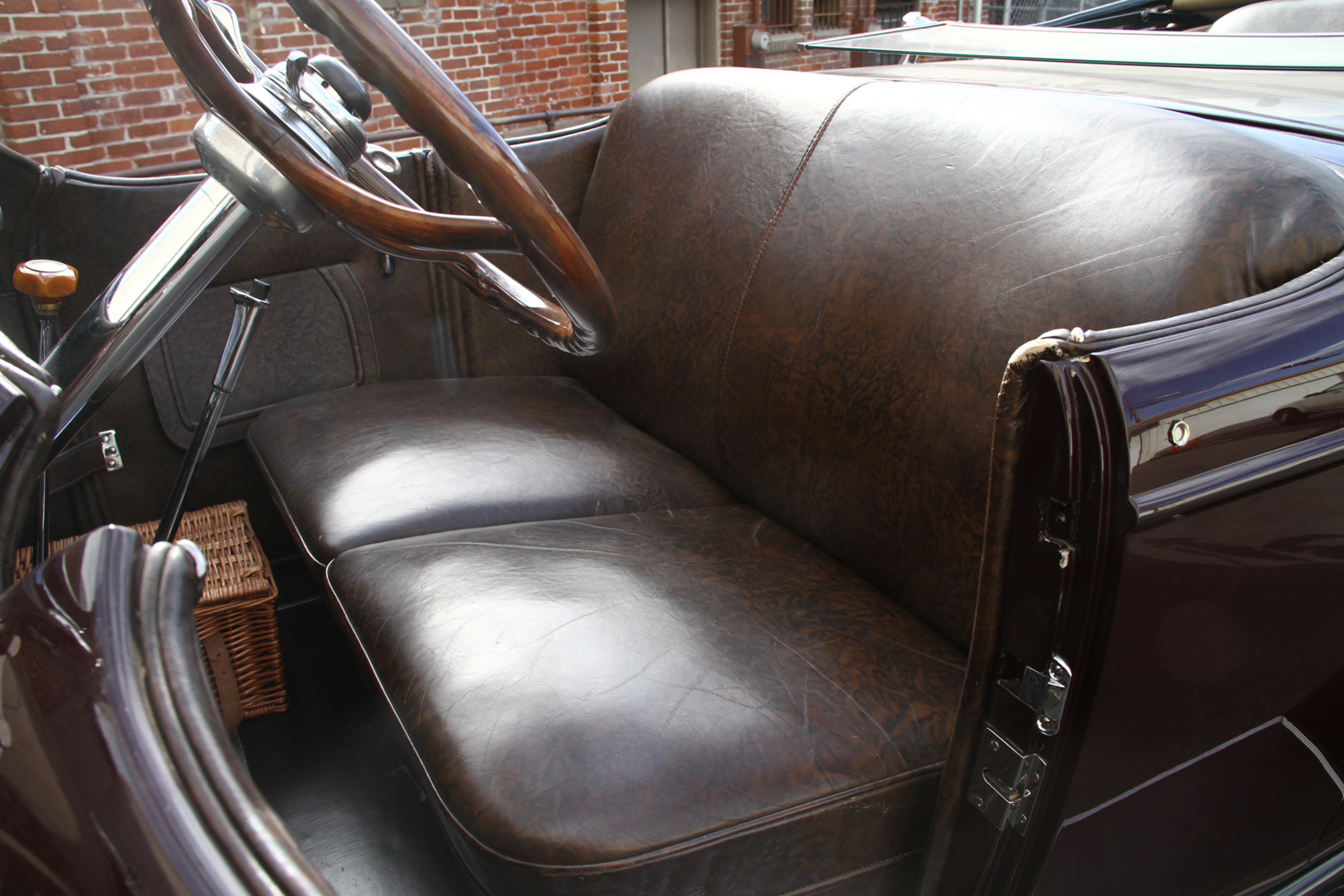
The front seat area is narrow and the cowl tapers toward the front end of the car, which is typical design thinking for the time. Chris and I are large guys, and are pushed shoulder to shoulder, even though this is a big car. By contrast, the back seat will easily accommodate three, has acres of legroom, and has a handsome dash of its own.


Chauffeurs usually piloted the luxury cars of the day, so the driver's compartment is as compact as the rear is commodious, and the back seat— with its own windshield and cowl— protects the passengers from the wind, as well as having to associate socially with the chauffeur. That's because if you had money it the roaring '20s, you flaunted it.
The big Lincoln accelerates nicely thanks to its unique 60-degree V8 motor. Its configuration is interesting in that it has fork-and-blade connecting rods paired on each crank journal, thus allowing its pistons to be positioned directly opposite each other. That means one connecting rod has two journals, with a space between allowing for the big end from the adjacent piston and connecting rod, which has only one narrower journal in the center of the other rod. And even though the crankshaft is not counter-balanced, the engine is smooth and has abundant torque at lower rpms.


In comparison, Packard's contemporary top-of-the-line, inline flathead-eight was an almost identical 357.66 cubic inches of displacement, but its crankshaft was counter balanced, and because of its inline configuration it had nine main bearings in order to keep the long heavy crank from whipping around and fracturing. This configuration resulted in a tall, heavy, long, but velvety smooth running engine.
In the mid-'20s Pierce stayed with their huge 414.7-cubic-inch T-head six for their top of the line model 33 that had four valves per cylinder and twin spark plugs at each cylinder for ignition. This unique engine was long-lived and sturdy, and produced immense torque in order to pull around the big Pierce limos that weighed in excess of 5,000 pounds.
Pierce's big six (they did not offer an eight until much later) was low compression (4.5:1) with a 4" bore and 5.5" stroke. It was also monumentally sturdy and very dependable but only made 74 horsepower to Packard's 85 and Lincoln's 90 ponies. Even so, Pierce's quality could not be faulted. The company's later V-12 engines from the 1930s were so powerful and dependable that they were used in Seagraves fire engines all the way into the 1950s.
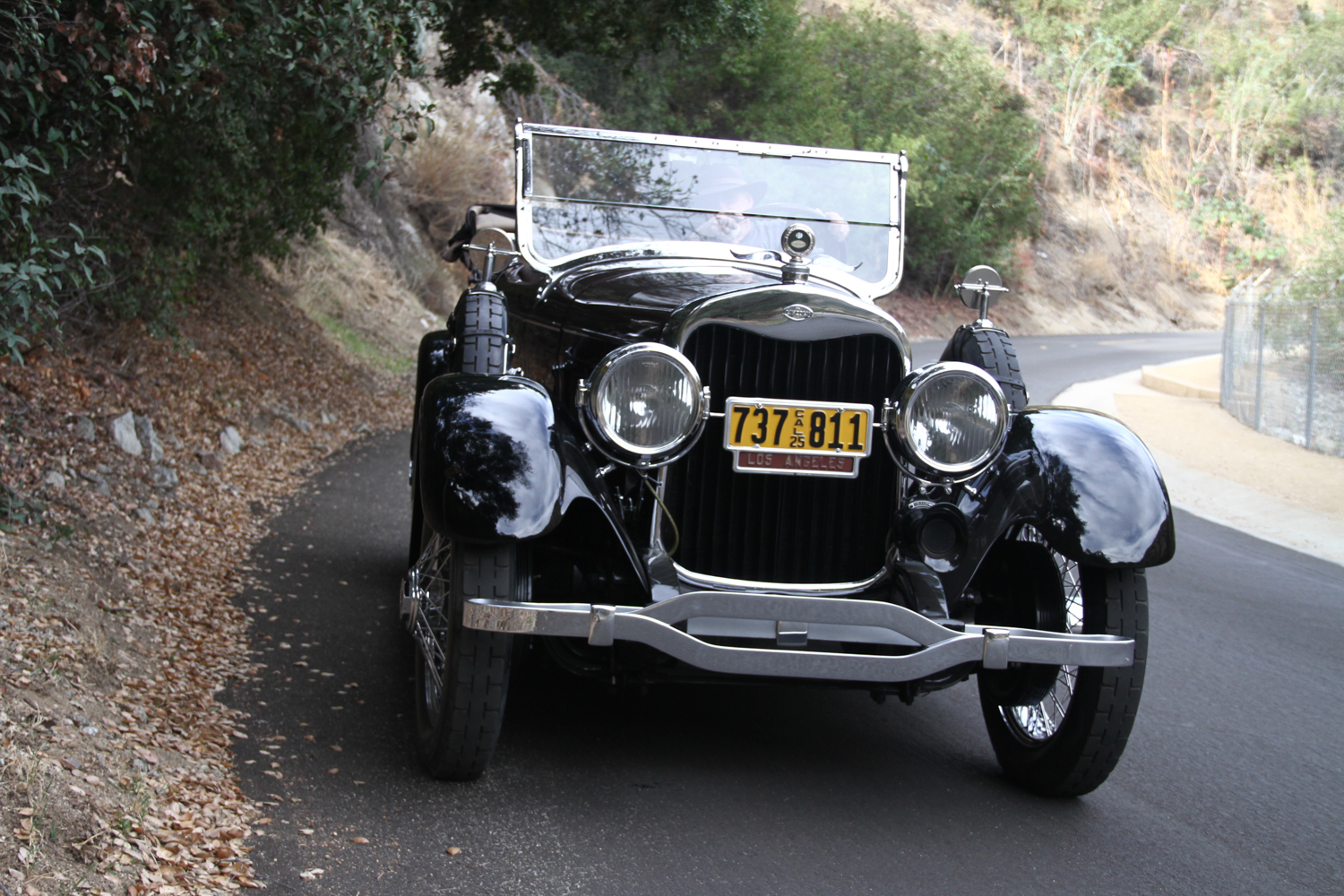
This grand old Lincoln's ride is serene and quiet, with bumps offering little to no resistance on our idyllic cruise through the tree-lined hills behind town. I attribute the ride to the fact that the car is heavy at 4,840 pounds, which is heavier than the equivalent 1925 Packard phaeton. That weight is due partly to the car's massive chassis, in addition to the fact that much of its body structure is made of ash with metal panels tacked onto it.
Actually, the 1925 Lincoln's chassis would be sturdy enough for a modern fire engine. That's because everything had to be heavy duty due to the fact that, in 1925, the pavement usually ended at the edge of town— and even Highway 66, John Steinbeck's Mother Road— was not completely paved until 1938, 13 years later. And having restored a couple of cars from this era, I can tell you that it is typical to find rocks and dirt up in the chassis and front suspension.

We loaf along at about 25 miles per hour on a nice sunny day, basking in the elegance of another age. The handsome dash has a full array of big, easy to read analog gauges reminiscent of the expensive watches of the era, and the upholstery is top quality leather, though this material was used in open cars of the day of our Lincoln for durability, not luxury. The closed sedans and limousines were done in English wool broadcloth and fancy brocades back then.
The sporty, optional Rudge-Whitworth center-lock wire wheels and side-mounted spare tires look magnificent, though they too were there for practical reasons. Wire wheels were sturdy, but much lighter than the more common, creaky wood spoke wheels of the time. And if you were going touring, a couple of spares were a must, especially when you consider that the tires of the time were made of cotton and natural rubber, and that most of the roads, especially out west, were not much more than dusty, rocky washboard trails.
While the features of Chris Kidd's Lincoln model L— like those of other early classics— are there for practical purposes, the combination adds up to a gorgeous classic of the era. This is a truly beautiful automobile from any angle. Of course, that is also partly because when Ford bought out Lincoln, in 1922, and Edsel who had taken over the Ford Motor Company, introduced styling changes to the somewhat conservative looking Lincoln line that made it seem sleeker and sportier.
After that, in 1924, the L series Lincoln was spruced up again with the addition of an extra cost, nickel-plated radiator shell among other stylistic touches. Many police departments purchased Lincolns due to their speed and reliability. Those models were called Police Flyers. And then, in 1925, Lincoln deleted the standard cowl lights, and added front and rear bumpers. A vacuum-powered windshield wiper was also included for the driver.

Photo: David Gooley
The design of the mid-'20s Lincoln L models was such a hit that when Ford came up with their new Model A, in 1928, many styling cues were taken from the elegant Lincolns. This tied the company's offerings together stylistically, to the point that the Model A looked a lot like a smaller, stubbier Lincoln. General Motors soon did the same with Chevrolet and Cadillac in the early '30s.
The Lincoln automobile had originally been the brainchild of Henry Leland, who had previously founded Cadillac, in 1902, after buying out Ford's first car company, which was in financial trouble, and using its facilities to develop his own car. His insistence on precision machining meant that he was able to build cars that could be mass-produced and assembled without custom fitting every component. And because of his insistence on excellence, Cadillac soon developed its great reputation.
And then William Crapo Durant bought Cadillac, in 1909, to add to his new General Motors conglomerate. Leland stayed on until 1917, at which time he could no longer tolerate Durant's frenetic financial management style. He then went into his own business building the big 400 horsepower Liberty V12 aircraft engines that were a derivative of Packard's Twin Six, in 1917. After the war ended, his company began building Lincoln automobiles, the first being delivered in 1920.

Henry Leland
Leland, who was 74-years old at that time, named his car after Abraham Lincoln because Lincoln was the first president for which Leland had voted, and he admired him greatly. The Lincoln motor car's conservative, but handsome styling originally came courtesy of Leland's son-in-law Angus Woodbridge, who had been a women's hat designer. In addition to looking majestic, the car was well engineered and painstakingly constructed to the highest standards. However, Leyland's timing couldn't have been worse.
After World War I ended, a sharp recession set in as the demand for food and materiel for our European allies waned, and the Spanish flu ravaged the world, killing over 20 million people. As a result, though the new Lincoln was outstanding, the company foundered and Henry Ford bought it in 1920 for a mere $8 million, even though Leland established that the company was worth twice that. The whole affair may have been a bit of tit for tat, because Leland had bought out the bankrupt first Ford Motor Company some years before, to found Cadillac.

Photo: David Gooley
By 1920, Henry was smug and complacent, however his son Edsel figured out that the company's only real vulnerability was that its fortunes depended on just one product, and though the Model T had been a dazzling success, it was beginning to be eclipsed by more current technology and design - especially since Henry was extremely reluctant to change anything on his beloved black spidery machine.
Under the terms of purchase, Leland and his son Wilford assumed they would have full authority to run the company as they saw fit, but it was not to be. On June 10th of 1922, Ford executive Ernest Liebold came to the Lincoln facilities to request the resignation of Leland's son Wilford. It then became obvious that Liebold was in charge, so Leland resigned as well, and both of them were escorted from the big factory they had created.

In fact, it was only a matter of months after the sale of Lincoln that Leland and his son left the company and Edsel became its president, with Ernest C. Kanzler as general manager. Edsel then commissioned a cleaner body for the model L, and hydraulic shock absorbers were added, which were quite advanced for the day. Kanzler also implemented cost saving strategies amounting to a thousand dollars per car.
Edsel realized that General Motors' strategy of offering a car for every pocketbook was a successful approach, despite Henry's extreme reluctance to change anything. Adding the Lincoln brand brought prestige to Ford's otherwise plebian offerings, even though by buying Lincoln, Ford was dipping its toes into a very crowded, and intensely competitive market as the '20s went on.
Photo: David Gooley
There were literally hundreds of automakers in the country in the '20s, and in the luxury market alone there was Packard, Pierce, Peerless, Stutz, Duesenberg, Marmon, Kissel and Du Pont among others. All of these halcyon brands were lovingly custom built exclusively for the wealthy, who could afford the best.
Driving Chris' 1925 Lincoln is pleasant but participatory. You know you are in charge of a substantial machine. And as with other cars of the era, its transmission does not have synchromesh, which wasn't invented until 1929, so you need to double-clutch and play the throttle to get the gears in the transmission to match the engine revs. Otherwise you will end up grinding them unmercifully. It takes a little practice to get it right and I am a bit rusty, but not dangerously so.
Photo: David Gooley
Steering is firm and direct, and once the car is rolling it is fairly light for a car of such aristocratic proportions. Braking, though mechanical, is quite good thanks to the fact that Chris added front drum brakes from a two-year later model to augment the system. This is allowable by the Classic Car Club of America for safety reasons. Otherwise one would have to take it very easy and plan ahead by today's standards, though two wheel, rear drum brakes were typical of cars of the time.
To put it into perspective, Ford's Model T only had one drum brake in 1925, and that was around the driveshaft. There was also a puny parking brake system with small drums at the rear wheels, but it was not designed to be used for routine stops.

Henry Leland had every reason to be proud of the cars he had spawned, even though the companies no longer belonged to him. He got his start in the automotive business by designing, building and supplying engines for Olds Motor Works in the 1890s, and then when the first Ford Motor Company went bankrupt in 1902, Leland and his partners purchased it and came out with a new car called the Cadillac, powered by an updated engine originally designed for the Oldsmobile.
It is surprising that the same man founded two (Cadillac and Lincoln) of the three American luxury marques still extant today if you include Chrysler's Imperial. However, the main reason these three survived despite the failure of many others was not because they were necessarily better than the Marmon, Pierce or Duesenberg, but because they had the huge conglomerates of General Motors, Chrysler and Ford behind them to back them up through the lean years of the depression. Also, these survivors slowly turned to mass-producing their offerings instead of sticking with the extremely labor intensive custom built cars.
Photo: David Gooley
Lincoln also came out later with their magnificent K line of cars, in 1930, that sported stunning coachwork and big V-12 engines, just as the depression hit, and then, in 1936, they introduced their handsome mid-range Zephyr with a smaller V-12 that was actually an adaptation of the Ford's V-8 first offered in 1932. Finally, in 1939, they brought out their lower mid-priced Mercury echoing General Motors' strategy.
In the 1940s, the Zephyr and Continental took Lincoln exclusively into assembly line production. The magnificent hand-built K models of the depression were eliminated in 1940, later to be replaced by the large luxurious post-war models such as the Premier and the Cosmopolitan that were mass produced, though with greater attention to quality.
Photo: David Gooley
We take the big Lincoln around and up the hills of Monrovia, and it loafs along at a dignified pace even though it is capable of surprising acceleration. People look up from their gardening and wave and smile, and a few take pictures with their cell phones. Other motorists show the old touring car the respect it is due, and nobody gets impatient with us, though some pull along side for a better look and a photo or two.

As the sun gets low on the horizon we swing back to town and pull into Chris' shop with its Art Deco front that looks rather humble from the street, but extends far back on the lot and is filled with a wonderland of magnificent machines from all over the world, and all eras. Chris returns the big Lincoln to its slot in the showroom and we adjourn to his office for a cup of coffee and a chat. It is the end of an altogether wonderful day of reliving motoring in another time.
SPECIFICATIONS
| Body: | Custom by Brunn |
| Wheelbase: | 136" |
| Engine: | V8 Fork and blade 357.8 cubic inches |
| Valves: | Two per cylinder in-block |
| Bore and stroke: | 3.5"X 5.00" |
| Horsepower: | 90 |
| Transmission: | Three-speed standard |
| Differential: | 4.90:1 |
| Brakes: | Mechanical |
| Weight: | 4,840 lbs |
| Price New: | $5,980 - $6,405 |
| Tire size: | 23" |
No politics, no religion, no instagrams, and commentary must be civil. The ToS and the CoC will be enforced, and anything that the administrator deems to be offensive will be deleted. YouTubes, videos and images that the administrator is unable to open must be described and explained or they will be deleted.









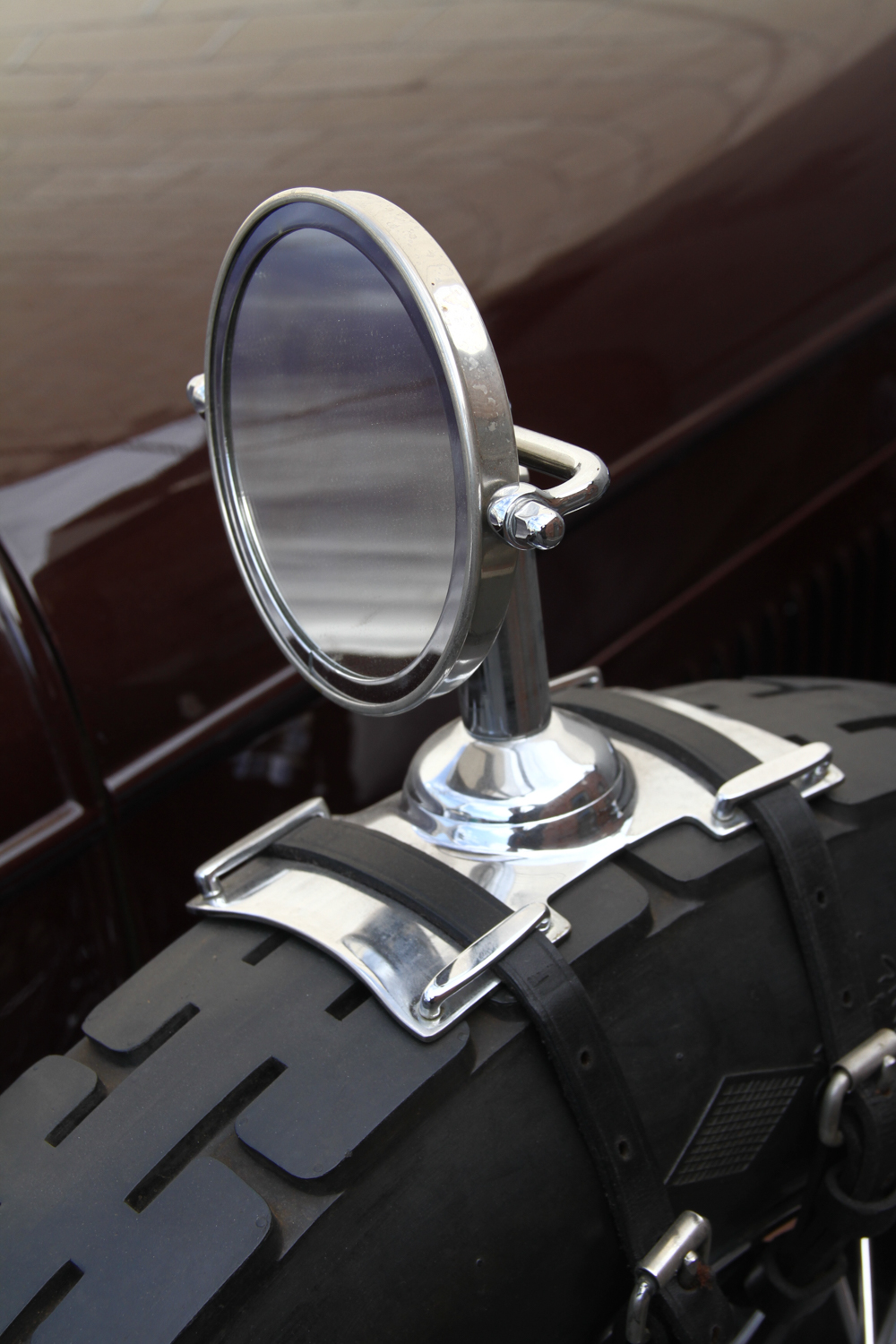



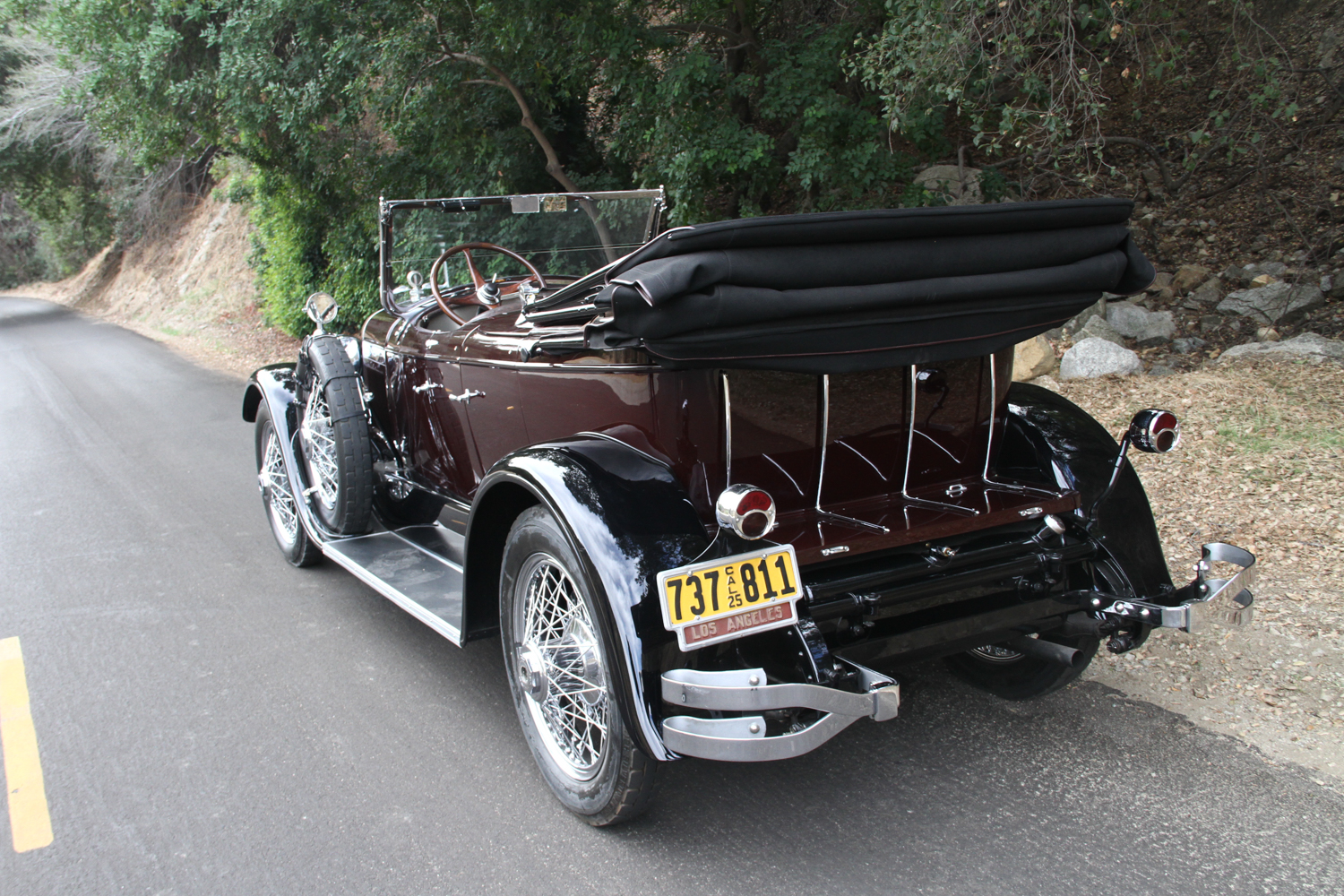





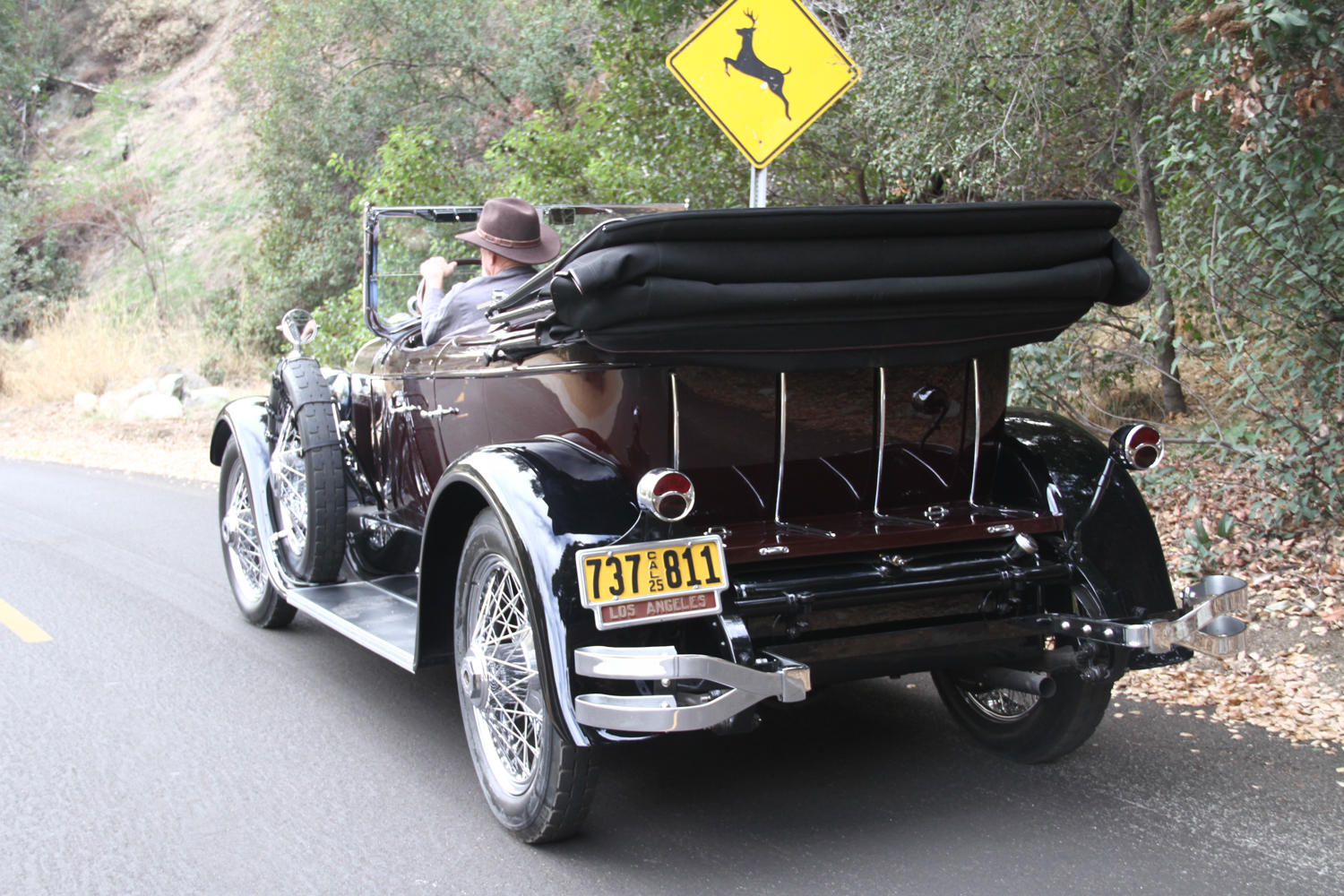
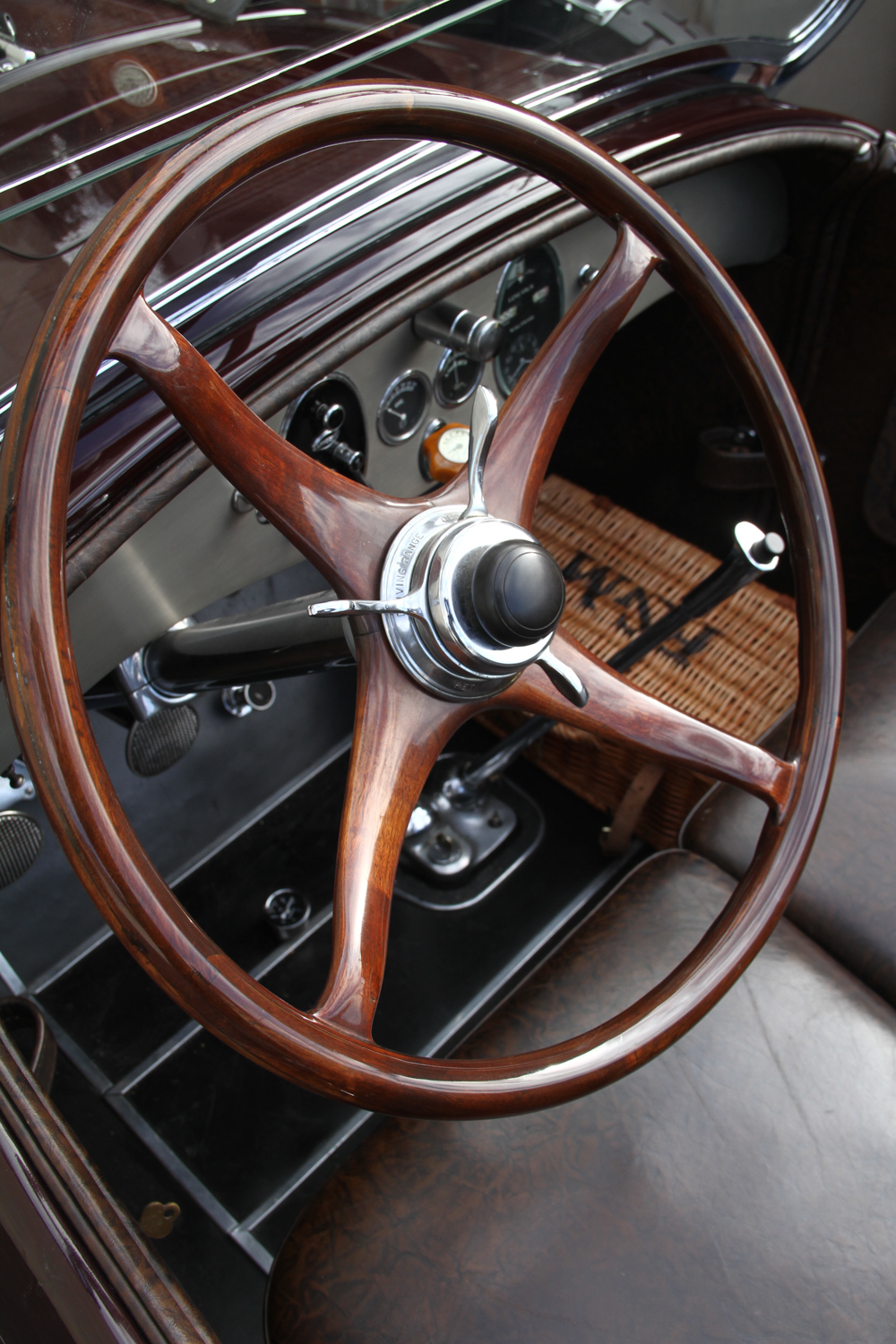





CAVEAT: Although this article is about a LINCOLN, it is not a political article. LOL
Nobody in my family ever owned a Lincoln but I always admired the early Lincoln Continentals with the tire on the back.
Tire on the back is called a ''continental kit''.
Wow, what a beauty of a car, congratulations to Chris.
I thought a "continental kit" would have been one that a person bought and attached to a car that did not have one built in originally like the one in the picture I posted above.
Yes, I guess I did.